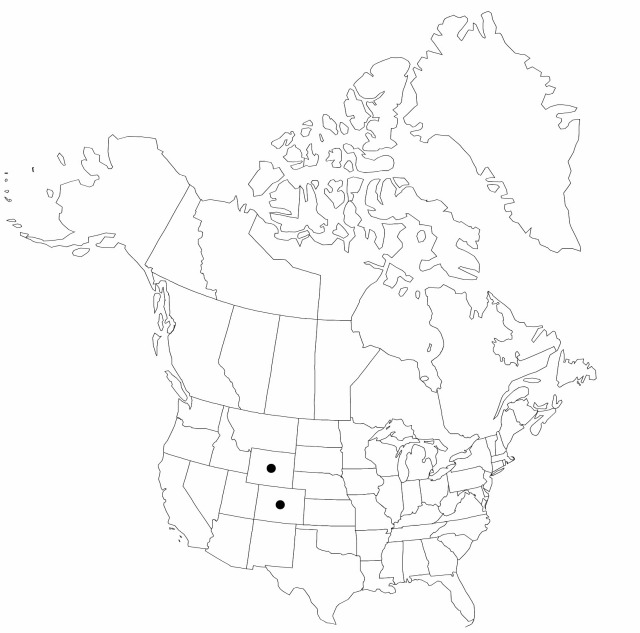Carex oreocharis
Amer. J. Sci. 159: 358, fig. 2. 1900.
Culms trigonous, not filiform or wiry, angles proximal to spike blunt or sharp, 10–50 cm, usually longer than leaves. Leaves: basal leaf-sheaths ± fibrillose when old; blades light to bright green, folded or channeled, not quill-shaped, 5–15 cm, (0.7–) 1–2 mm wide near base. Spike 17–40 × 4–6.5 mm; staminate portion 10–16 (–20) mm. Proximal pistillate scales golden-brown (cream-colored) with white margins to 1.2 mm wide or cream-colored throughout, orbiculate, 3–5.5 × 2–3.5 mm, shorter than mature perigynia, apex obtuse to awned. Staminate scales gold with white margins, oblong-lanceolate, apex obtuse to acute. Perigynia 3–15, erect to appressed, white to gold, broadly obovate to broadly ovate, 3–4.5 × 1.4–2.2 mm, body hirsute or puberulent at least proximal to beak; beak (0.4–) 0.5–1 mm; rachilla present. Achenes obovate to elliptic, 2.2–2.6 (–3) × 1.2–1.9 mm. Stigmas ± black.
Phenology: Fruiting spring–summer.
Habitat: Dry slopes in granitic soils
Elevation: 2200–3300 m
Distribution

Colo., Wyo., Mexico (Coahuila)
Discussion
Selected References
None.
Lower Taxa
"shortened" is not a number."puberulent" is not a number. "hirsute" is not a number.
